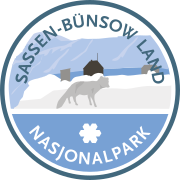Sassen–Bünsow Land National Park
In today's world, Sassen–Bünsow Land National Park is a topic that has become relevant in different areas of society. Its impact extends from politics to people's daily lives, generating debate and reflection around its influence and consequences. Throughout history, Sassen–Bünsow Land National Park has been the object of study and interest, which has led to a deep and varied analysis of its implications. In this article, we will explore different perspectives and approaches around Sassen–Bünsow Land National Park, with the aim of understanding its importance and scope today. By reviewing different studies and research, as well as presenting expert opinions, we aim to provide a comprehensive and enriching vision of Sassen–Bünsow Land National Park, which contributes to the knowledge and understanding of this topic that is so relevant today.
| Sassen – Bünsow Land National Park | |
|---|---|
 | |
 | |
| Location | Spitsbergen, Svalbard, Norway |
| Nearest city | Longyearbyen |
| Coordinates | 78°23′N 17°15′E / 78.383°N 17.250°E |
| Area | 1,230 km2 (1,157 km2 land, 73 km2 sea) |
| Established | 2003 |
| Governing body | Directorate for Nature Management |
 | |
Sassen–Bünsow Land National Park (Norwegian: Sassen–Bünsow Land nasjonalpark) lies on Spitsbergen island in the Svalbard archipelago, Norway. The park was opened in 2003 and includes both glaciers and several glacially carved valleys. The sealer/whaler Hilmar Nøis built the hunting station Fredheim on the north side of the Sassen river outlet in this area. One of Spitsbergen's highest waterfalls lies in Eskerdalen (Esker Valley) inside the park.

External links
